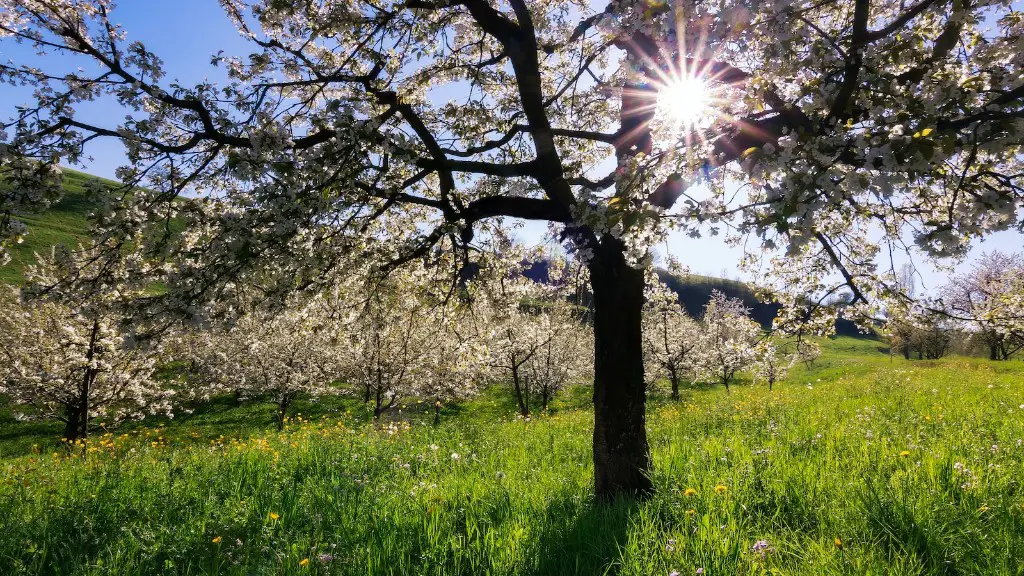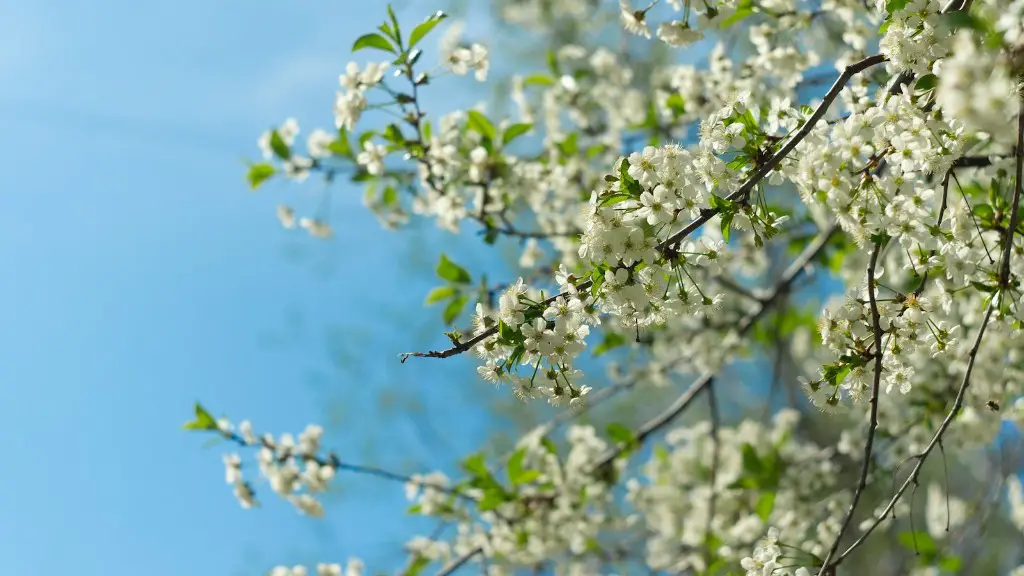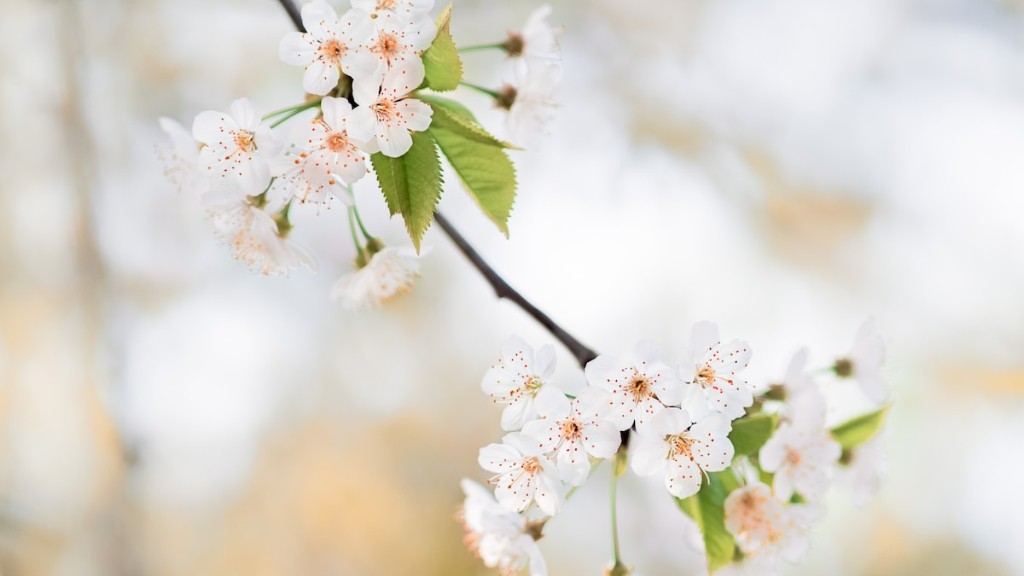How to Plant a Kwanzan Flowering Cherry Tree: Get to Know the Basics
For gardeners wanting to add a cherry tree to their landscape, a Kwanzan flowering cherry tree is a great option. Kwanzan cherries, also known as Sato cherries, are early-blooming Japanese cherries. With an upright, wide-spreading form and beautiful, dark pink blossoms, this tree is a perfect addition to any garden or landscape. Here are the basics of what you need to know when it comes to planting your Kwanzan cherry tree.
Choosing a Location
When selecting a location for your Kwanzan cherry tree, you’ll want to pick a spot that allows plenty of room for the tree’s wide-spreading branches. You’ll also want to locate the tree away from strong winds, which can damage the delicate blooms of the tree. Full sun is best, though the tree can tolerate partial shade as well. Kwanzan cherry trees prefer well-draining soil, so be sure there is proper drainage in the area you choose.
Preparing the Soil
Once you have the perfect spot selected for your tree, you’ll want to prepare the soil for planting. Start by mixing the soil in the planting hole with some organic material such as compost or peat moss. This will help to improve the overall texture of the soil, making it more fertile and better draining. You’ll also want to make sure to break up any large clumps of soil. As you backfill the hole, tamp down the soil gently to remove any air pockets.
Planting the Tree
When it’s time to actually planting the tree, you’ll want to follow a few steps to ensure the best results. First, position the tree in the planting hole and make sure that it is level with the surrounding soil. Then, backfill the hole with more of the soil mixture, until it is filled. Be sure to press down the soil to remove any air pockets. Finally, water the soil generously, and mulch around the tree to help retain moisture in the soil.
Caring for the Tree
Once your Kwanzan cherry tree is planted and established, you’ll need to take some steps to ensure its successful growth. Water your tree regularly and make sure to keep it weed-free. You may also want to give the tree an occasional boost of fertilizer, though always follow the directions on the product you use. Lastly, prune your tree to remove any dead or diseased branches, as well as any crossing branches for better air circulation.
Check for Pests and Diseases
Since your Kwanzan cherry tree is an outdoor plant, pests and diseases can be a major concern. Many pests and diseases can cause significant damage to flowering cherry trees, so it’s important to inspect your tree regularly for any signs of trouble. Check your tree’s leaves and branches for any signs of pests or diseases, and take action immediately if you notice anything suspicious.
Maintaining a Healthy Tree
When it comes to keeping your Kwanzan cherry tree healthy, there are a few tips and tricks to keep in mind. Be sure to water the tree regularly and make sure the soil always has adequate moisture. Also, be sure to prune the tree regularly to keep its shape and encourage healthy growth. Finally, make sure to check the tree regularly for any signs of pests and diseases and take action immediately if any are detected.
Protecting Your Tree from the Elements
As a flowering cherry tree, the Kwanzan cherry tree is particularly susceptible to damage from the elements, especially cold temperatures and strong winds. Therefore, it’s important to protect your tree from these elements, if possible. If the weather is especially cold, be sure to cover the tree with a blanket or tarp to protect it from the cold. Additionally, you may also want to tie up the tree’s branches to protect them from strong winds.
Harvesting the Fruits
Though not the main attraction of the Kwanzan cherry tree, the tree does produce edible fruits. Typically, the fruits ripen and are ready to eat in mid-summer. When harvesting, be sure to be gentle, as the delicate fruits can easily be damaged. Enjoy the fruits fresh or use them to make pies, jams, and other treats.
Growing Your Kwanzan Cherry Tree in Containers
If you don’t have the space for in-ground planting, you can also grow your Kwanzan cherry tree in a container. When growing in a container, it’s important to use the right type of soil. You’ll want to mix soil with compost and a few handfuls of manure for optimal fertility. Make sure you also use a container that is large enough to accommodate the size and growth of your cherry tree. Lastly, be sure to place the tree in a spot that gets plenty of sunlight and keep the soil moist.
Fertilization and Pruning
Fertilizing and pruning your Kwanzan cherry tree is important if you want to ensure its healthy growth and development. Typically, you’ll want to fertilize your tree twice a year–once in late spring, and then again in late summer. For pruning, you’ll want to prune any dead or crossing branches, as well as thin out the canopy, to ensure adequate air circulation.
Winterizing Your Kwanzan Cherry Tree
Finally, it is important to take steps to protect and care for your Kwanzan cherry tree during the winter months. When it comes to protecting your tree from cold temperatures, you’ll want to ensure that any mulch and soil around the tree is dry and fluffy. You’ll also want to wrap the trunk of your tree with burlap or an old blanket to protect it from winter sun and wind. Additionally, you may want to spray the tree with an antidesiccant spray to help keep it from drying out. Finally, you’ll want to water your tree regularly during the winter months and keep the soil moist.


